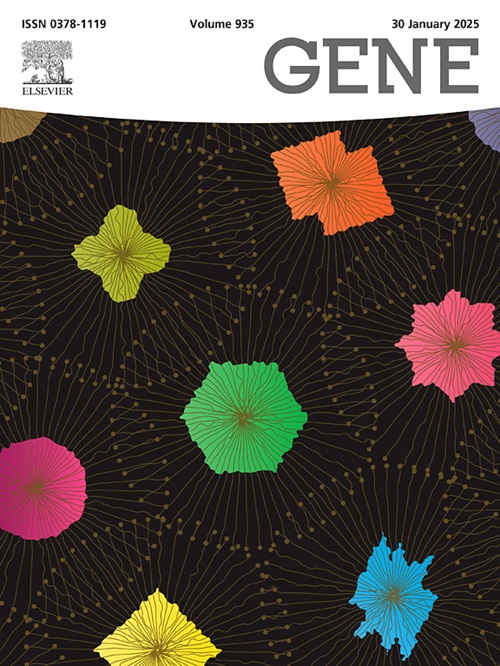ZmCYB5-1, a cytochrome b5 Gene, negatively regulates drought stress tolerance in maize
IF 2.6
3区 生物学
Q2 GENETICS & HEREDITY
引用次数: 0
Abstract
Cytochrome b5 proteins (CYB5s), integral components of electron transport systems, are well-documented mediators in plant-specific fatty acid biogenesis and cuticular lipid deposition. However, the mechanisms through which CYB5 genes modulate drought stress responses in maize remain poorly understood. In this study, we identified a novel drought-responsive gene designated as ZmCYB5-1 and characterized its role in drought adaptation. The transcriptional profile of ZmCYB5-1 was found to be significant down-regulated by both drought stress and abscisic acid (ABA). Sequence analysis revealed that ZmCYB5-1 possesses the conserved cytochrome b5 domain characteristic of this protein family. Transient expression assays in tobacco epidermal cells confirmed that ZmCYB5-1 is predominantly localized in the cytoplasm and nucleus. Strikingly, transgenic maize plants overexpressing ZmCYB5-1 displayed markedly reduced drought tolerance compared to wild-type controls. Transcriptomic profiling under drought stress conditions demonstrated that the overexpression line exhibited significant downregulation of genes related to three key biological processes: ABA signal transduction pathways, stress response mechanisms, and photosynthetic apparatus. Collectively, our findings provide compelling evidence that ZmCYB5-1 acts as a negative regulator of drought stress responses in maize, highlighting its potential as a promising genetic engineering target for improving drought resistance through gene-editing approaches.
细胞色素b5基因ZmCYB5-1对玉米抗旱性有负调控作用。
细胞色素b5蛋白(CYB5s)是电子传递系统的重要组成部分,是植物特异性脂肪酸生物生成和角质层脂质沉积的介质。然而,CYB5基因调控玉米干旱胁迫反应的机制仍然知之甚少。在这项研究中,我们鉴定了一个新的干旱响应基因,命名为ZmCYB5-1,并鉴定了其在干旱适应中的作用。ZmCYB5-1的转录谱在干旱胁迫和ABA胁迫下均显著下调。序列分析表明,ZmCYB5-1具有该蛋白家族保守的细胞色素b5结构域特征。烟草表皮细胞的瞬时表达实验证实,ZmCYB5-1主要定位于细胞质和细胞核。引人注目的是,与野生型对照相比,过表达ZmCYB5-1的转基因玉米植株的耐旱性明显降低。干旱胁迫条件下的转录组学分析表明,过表达系表现出与ABA信号转导途径、胁迫反应机制和光合器官三个关键生物过程相关的基因显著下调。总之,我们的研究结果提供了令人信服的证据,证明ZmCYB5-1是玉米干旱胁迫反应的负调节因子,突出了其作为通过基因编辑方法提高抗旱性的有希望的基因工程靶点的潜力。
本文章由计算机程序翻译,如有差异,请以英文原文为准。
求助全文
约1分钟内获得全文
求助全文
来源期刊

Gene
生物-遗传学
CiteScore
6.10
自引率
2.90%
发文量
718
审稿时长
42 days
期刊介绍:
Gene publishes papers that focus on the regulation, expression, function and evolution of genes in all biological contexts, including all prokaryotic and eukaryotic organisms, as well as viruses.
 求助内容:
求助内容: 应助结果提醒方式:
应助结果提醒方式:


